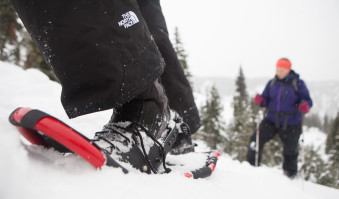Nikki Staab knows how challenging it can be to put an active lifestyle on hold while recovering from an injury or illness. You may especially suffer if the injury was caused due to a workplace accident or was not your own fault, this can make it particularly hard to accept. Sometimes speaking to lawyers similar to Andy Gillin or a lawyer in your local area may be beneficial to helping you feel some comfort during a recovery period. Seeking out assistance if you are struggling is always worth it if you have the ability to do so, however, a reputed injury attorney in your hometown should always be willing to help you.
There are a lot of times where the intensity of an injury is measured. For example, if an injury is severe enough, for example, to warrant exploring nerve damage settlement cases, the injury can take over your entire life. The certified personal trainer had surgery from a plantar plate tear and spent months in a cast and boot. Had the injury been as a result of an accident that wasn’t her fault, she may have wished to employ the services of someone like this Jonesboro personal injury lawyer to help defend her and get her compensation to help towards her treatment and lost earnings as a result of the injury.
The process isn’t new to her. She has helped clients get back or get started after body changes, such as a surgery, pregnancy, or a major diagnosis.
“You have to get your brain around a new and different normal as opposed to your old normal,” she said.
The owner of Fitness for Life with studios in Tacoma and Enumclaw knew she had to give her body time to recover to avoid further injury. But that doesn’t mean she wasn’t frustrated along the way.
“After surgery, I did zero activity for two months,” she said. “My leg had to be elevated, so I basically laid down for two months.”
Even getting back to a workout routine after a cold, flu–or months in quarantine can make the body feel different.
“You have to embrace that it is going to be different,” she said. “And there’s going to be some good. And you’re going to find new strengths.”
Looking at Plan B
Pre-injury, Staab loved kickboxing workouts. Now, she is preparing for the possibility that she won’t be able to kickbox anymore or that it won’t be the same.
“You have to absorb what is and problem solve from there,” she said. “It’s the same mindset with an injury or a diagnosis. No amount of being mad about having a torn tendon is going to change the torn tendon.”
It’s not uncommon to feel depression after an injury or illness impacts something you love. Staab said she started bracing herself early on for kickboxing to change. But she also found happiness in different kinds of physical activity. She enjoys doing farm work and horseback riding.
“Sometimes plan B turns out to be something even better than Plan A,” she said.
Stretching
After months in a cast and a boot without being pointed of flexed, Staab’s ankle didn’t bend well. So, she started there, flexing her ankle and working on movement.
“Whenever I’m limited, I start with stretching,” she said.
She said stretching is the ideal start because it feels good and makes you want to do it.
Focusing on What You Can Do
After she started getting some movement with stretching, Staab started looking for work-arounds. Even though putting weight on her leg wasn’t an option, she could still work her core or upper body. See some of Staab’s exercise adaptations on New Day.
Limitations can be an opportunity to try something new, which keeps your body and mind challenged.
“Variety is great for results, too,” Staab said. “The body can adapt to anything.”
She added that when you start something new, you will begin to notice every little change and progress can happen quickly.
She suggested really focusing on the muscle you’re working, to get a little bit more out of the exercise.
“You don’t want to check out during your workout,” she said.
Listening to Your Body
As you ramp back up, be sure to ease your way in. Whatever your normal workout was, just take half the intensity the first day back. Yes, that includes the first day back after a cold or extended absence too. It can take a little while to get that energy back.
Staab has an important reminder: “An easy workout is not a waste of time. It’s being sure to prevent injury.”
She said the first couple workouts always feel hard. It’s really important to listen to your doctor and take the time that it takes to recover and ease back in. Jumping back in too soon affects your long-term health.
“Somedays you’ll be able to do more, some days you’ll need to do less,” Staab said. “Rest on the days that you need to.”
Image by StephM2506


